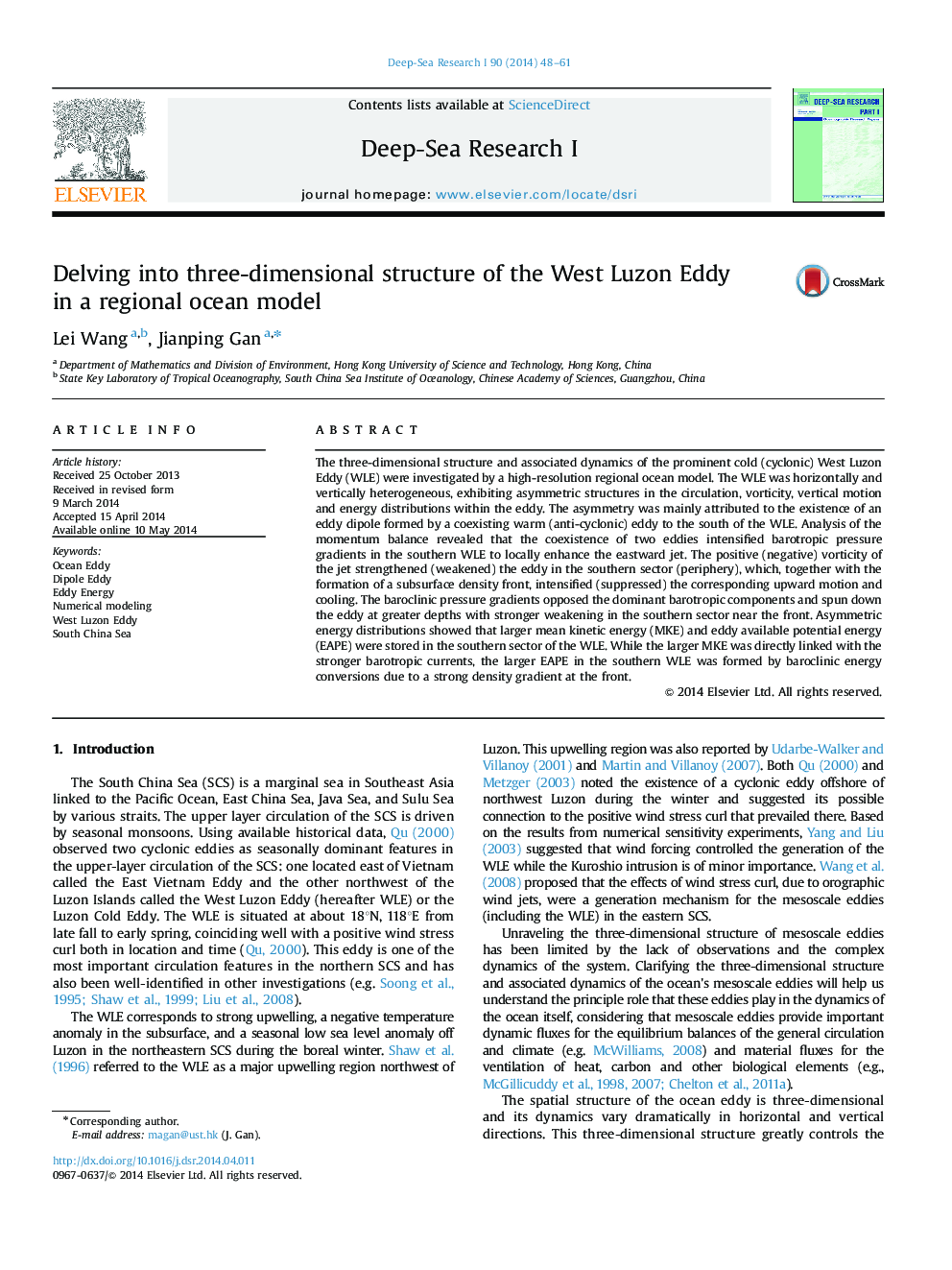| کد مقاله | کد نشریه | سال انتشار | مقاله انگلیسی | نسخه تمام متن |
|---|---|---|---|---|
| 4534506 | 1626340 | 2014 | 14 صفحه PDF | دانلود رایگان |

• The cold West Luzon Eddy was horizontally and vertically asymmetric.
• The coexistence of a warm eddy built the asymmetric momentum balances in the eddy.
• Asymmetric energies were distributed by barotropicity or baroclinicity in the eddy.
The three-dimensional structure and associated dynamics of the prominent cold (cyclonic) West Luzon Eddy (WLE) were investigated by a high-resolution regional ocean model. The WLE was horizontally and vertically heterogeneous, exhibiting asymmetric structures in the circulation, vorticity, vertical motion and energy distributions within the eddy. The asymmetry was mainly attributed to the existence of an eddy dipole formed by a coexisting warm (anti-cyclonic) eddy to the south of the WLE. Analysis of the momentum balance revealed that the coexistence of two eddies intensified barotropic pressure gradients in the southern WLE to locally enhance the eastward jet. The positive (negative) vorticity of the jet strengthened (weakened) the eddy in the southern sector (periphery), which, together with the formation of a subsurface density front, intensified (suppressed) the corresponding upward motion and cooling. The baroclinic pressure gradients opposed the dominant barotropic components and spun down the eddy at greater depths with stronger weakening in the southern sector near the front. Asymmetric energy distributions showed that larger mean kinetic energy (MKE) and eddy available potential energy (EAPE) were stored in the southern sector of the WLE. While the larger MKE was directly linked with the stronger barotropic currents, the larger EAPE in the southern WLE was formed by baroclinic energy conversions due to a strong density gradient at the front.
Journal: Deep Sea Research Part I: Oceanographic Research Papers - Volume 90, August 2014, Pages 48–61